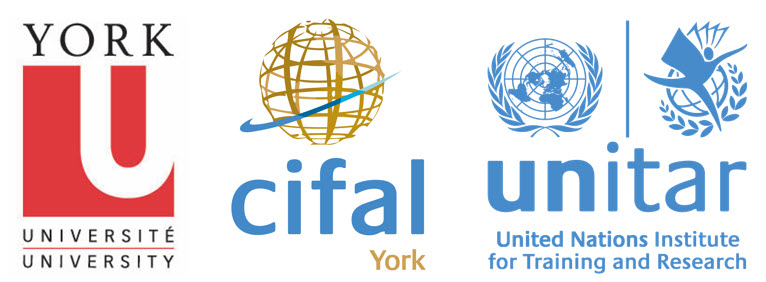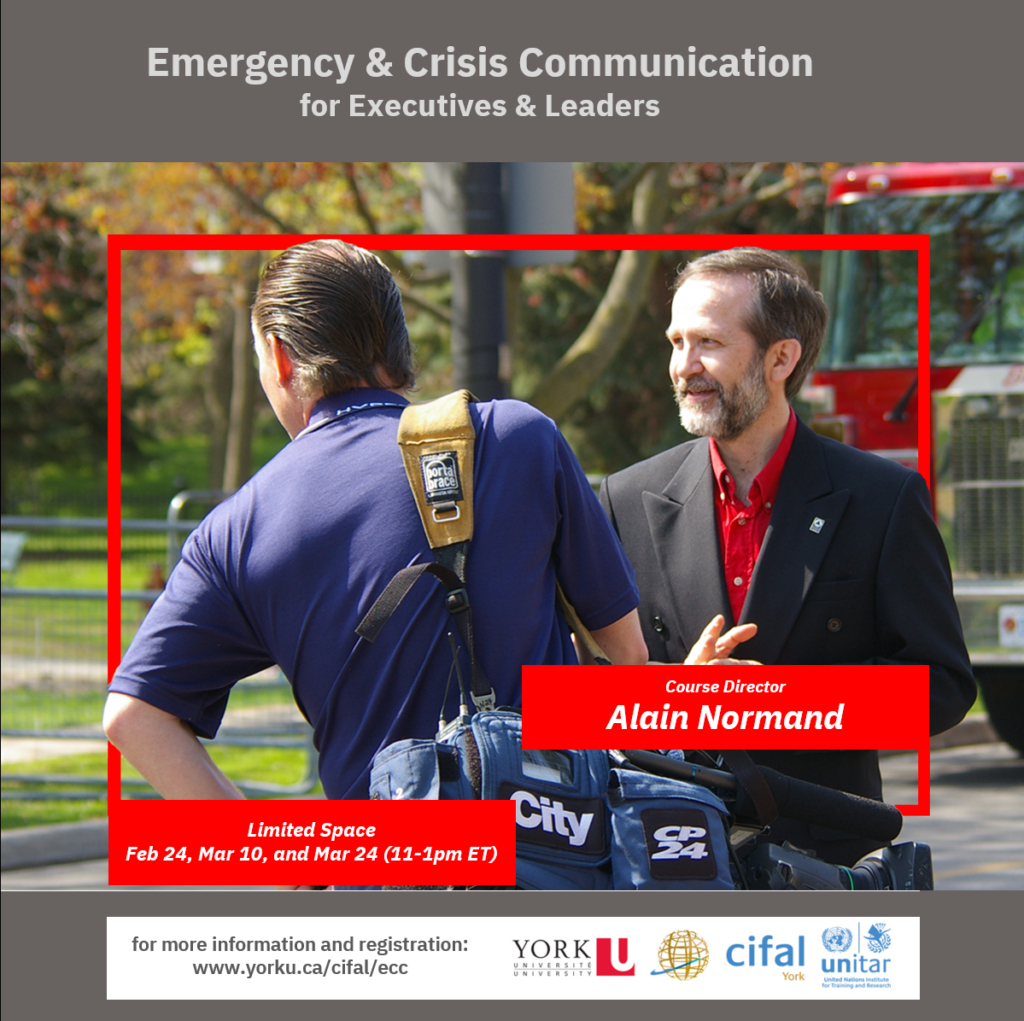
A Virtual (Zoom) Crash Course from CIFAL York
For executives and senior managers in public and private sectors, graduate students in disaster & emergency management, public health, public policy, management, and media not traditionally trained in communication but likely to be tasked with the role during a crisis etc.
Registration fee: CAN$ 280.03
Friday, Feb. 24th, 2023, 11 AM - 1 PM EST | Friday, Mar. 10th, 2023, 11 AM - 1 PM EST | Friday, Mar. 24th, 2023, 11 AM - 12 PM EST
REGISTER
Course instructor: Alain Normand
Alain Normand is an author, lecturer, teacher and expert in Emergency Management. He directed relief efforts in emergencies such as the Saguenay floods in 1996, the Quebec Ice Storm of 1998, the repatriation of Canadians from Haiti after the earthquake of 2010, and many more. He was an emergency management and business continuity consultant to numerous organizations including many Greater Toronto Area municipalities for a number of years. He was the Emergency Manager for the City of Brampton from 1999 to 2021. He served as the President of the Ontario Association of Emergency Managers (OAEM) and many of its committees over that past two decades. Altogether, he has spent more than thirty years of his life in Emergency Management in one form or another and brings both knowledge and experience of this growing field of expertise. In 2010, Alain was recognized as the top National Emergency Manager and awarded the Canadian award for Emergency Management. In June 2019, the Canadian Risk and Hazard Network granted the Lifetime Achievement Award to Alain in recognition of his role in advancing the emergency management profession. This is the highest recognition in this field in Canada. Alain has been teaching the Emergency Management Communication course at York University's Disaster and Emergency Management course since 2010.


Course Description
A crash course of about 5 hours aimed at preparing executives for roles that they may be asked to play in communicating during emergencies. The course will cover the theories on communicating during a crisis accompanied by case studies to demonstrate the use of those theories in real situations. The course content will be reinforced by practical exercises where students will be presented with incidents for which they will play the role of the Emergency Information Officer (EIO).

Course Learning Objectives
After taking this course participants will be able to:
- Explain the complexities of providing public information in an emergency response setting.
- Evaluate the skills required to be an efficient, effective public speaker.
- Prepare to provide timely, accurate, and relevant messages to the public.
- Understand how to work with both traditional and social media and the tools they use.
- Understand the importance of maintaining trust and credibility for the organization.
- Know how to build a crisis communication plan.

Course Approach
The course will be a mix of theory, applications, and practical exercises in order to provide the knowledge but also to hone some of the skills required for successful crisis communication implementation. Emphasis is put on being a messenger charged with the delivery of critical information to stakeholders and on maintaining the reputation of the organization at the centre of the situation.

Introduction to Crisis Communications (2 hours)
Objectives:
- Introducing basic concepts of communication.
- Applying communication concepts to crisis situations.
- Applying risk definition to emergency communication.
- Understanding the role of emergency information officers and crisis communicators.
- Being able to establish a structure for efficient planning and implementation of emergency communications.
- Knowing how to select the right spokesperson.
- Understanding the tasks related to communication and public information within an EOC setting.
Case study:
- Case study on Maple Leafs Food Listeria Outbreak

Public Confidence and persuasion (2 hours)
Objectives:
- Understanding how to work with traditional media and social media in emergencies.
- Knowing how to prepare for interviews, scrums, and press conferences.
- Using tools to maintain public confidence in crisis communications.
- Using the bridging technique appropriately.
- Using various approaches for persuasion of key stakeholders during a crisis.
- Understanding the science behind public response to messages during emergencies.
Case studies:
- Case study 1-Elliot Lake Algo Mall collapse response
- Case study 2- Lac Megantic train disaster communication

Developing Crisis Communication Plans (1 Hour)
Objectives:
- Knowing what is contained in an emergency communication plan.
- Using tools to ensure emergency communication plan is comprehensive yet adaptable.
- Reviewing concepts from the course and applying them to a communication plan.
Case study:
- Case study on Pickering False Alarm January 2020
Certificate of course completion will be provided to those who finish the course by CIFAL York.
